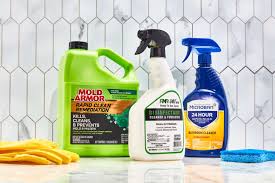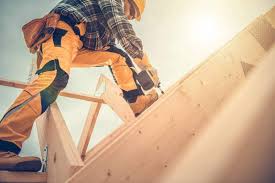Mold, a ubiquitous enemy of clean homes, can lurk in damp corners, wreaking havoc on both your property and your health. Its presence can trigger allergies, irritate respiratory systems, and even lead to more serious health issues. But fear not, brave warriors against biohazards! This comprehensive guide equips you with the knowledge and tools to tackle mold removal and prevent its unwelcome return.
Understanding the Moldy Foe: Biology and Threats
Mold is a multicellular fungus that thrives in damp environments. It reproduces by releasing spores into the air, which can travel long distances and settle on new surfaces upon finding a suitable moisture source. These spores germinate and form new colonies, creating the visible mold growth we see on walls, ceilings, and other surfaces.
Here’s why mold poses a threat:
- Health Hazards: Exposure to mold can trigger allergic reactions, asthma attacks, and respiratory problems. People with compromised immune systems are particularly vulnerable.
- Structural Damage: Mold can eat away at building materials like wood, drywall, and insulation, leading to structural damage over time.
- Unpleasant Odours: Mold growth often produces a musty, unpleasant odour that can permeate your living space.
Identifying the Mold Monster: Common Signs and Types
Early detection is crucial for effective mold removal. Here’s what to watch out for:
- Visible mold growth: This can appear as fuzzy patches in various colours, like black, green, brown, or white.
- Musty odours: A persistent, earthy smell is a telltale sign of hidden mold growth.
- Water damage: Areas with leaks, condensation, or high humidity are prime breeding grounds for mold.
- Respiratory problems: If you experience allergy-like symptoms or difficulty breathing after spending time in a specific area, mold could be the culprit.
It’s important to note that identifying the specific type of mold requires professional testing. However, understanding common types can provide a general idea:
- Cladosporium: Black or green mold, often found on damp walls and ceilings.
- Aspergillus: Green, black, or brown mold, known for triggering allergic reactions and respiratory problems.
- Penicillium: Green or blue mold, often found on food and damp surfaces.
- Alternaria: Black or brown mold, known for triggering asthma attacks and hay fever symptoms.
Deciding on Your Battle Plan: DIY vs. Professional Mold Removal
The approach to mold removal depends on the severity of the infestation:
DIY Removal:
Suitable for small mold patches (less than 10 square feet) on non-porous surfaces like tile, glass, or metal.
- Safety First: Wear protective gear like gloves, N95 respirator, and goggles to prevent inhaling mold spores.
- Cleaning Solutions:
- Vinegar: A natural disinfectant, effective for killing surface mold. Mix equal parts white vinegar and water in a spray bottle, saturate the moldy area, and let it sit for an hour before scrubbing and rinsing.
- Borax: A natural fungicide, effective for killing mold spores. Mix 1 tablespoon of borax with 1 gallon of water in a spray bottle, saturate the moldy area, and let it dry completely. Important Note: Borax can be harmful if ingested, so keep it out of reach of children and pets.
- Commercial Mold Removers: Follow the manufacturer’s instructions carefully, ensuring proper ventilation.
- Cleaning Process:
- Once the mold is dead, scrub the area with a stiff brush.
- Dispose of contaminated cleaning cloths and sponges in sealed garbage bags.
- Ensure thorough drying of the area to prevent re-growth.
Professional Removal:
Recommended for:
- Large mold infestations (greater than 10 square feet)
- Mold on porous surfaces like drywall, carpet, or wood
- Mold in areas with suspected hidden growth behind walls or ceilings
- Situations where you suspect the presence of hazardous black mold species.
Professionals have the expertise and equipment for safe and effective removal, including:
- Containment: Sealing off the affected area to prevent further spore dispersal.
- HEPA filtration: Using air scrubbers with HEPA filters to remove airborne mold spores.
- Advanced cleaning techniques: Employing specialized equipment for mold remediation on various surfaces.
Conclusion: Maintaining a Mold-Free Sanctuary
By understanding the biology and threats of mold, employing effective removal strategies, and implementing preventative measures, you can create a mold-free sanctuary in your home. Remember, early detection is key. Regularly inspect moisture-prone areas and address any water damage promptly.




